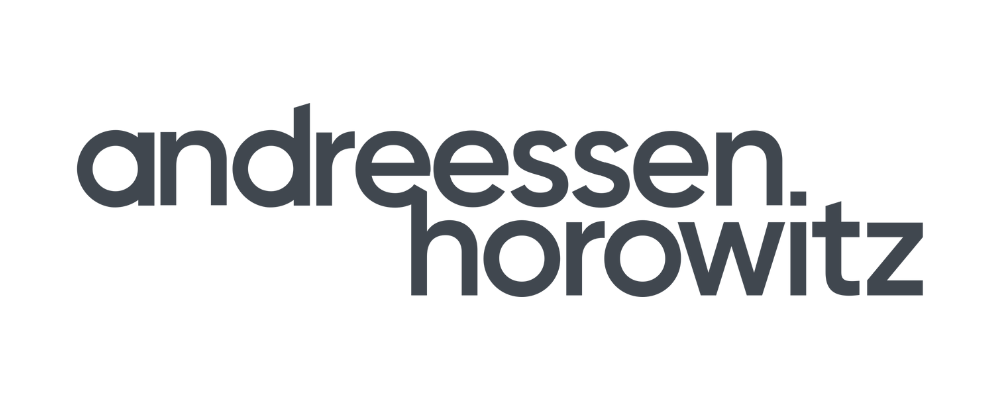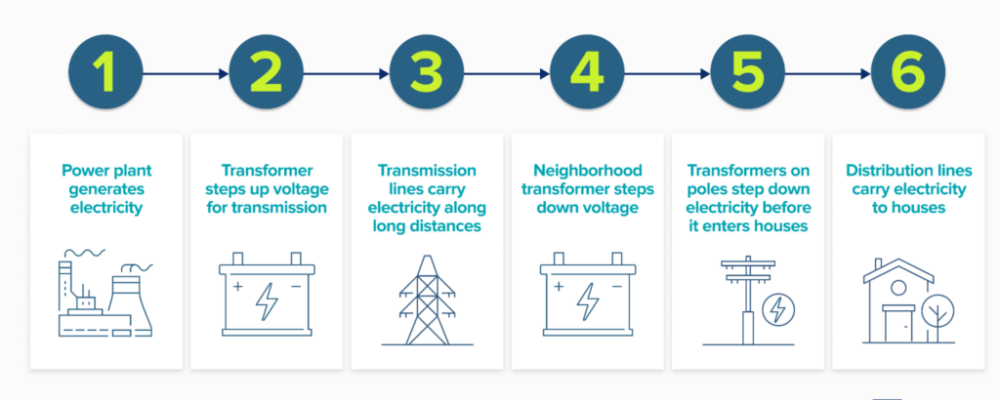Editor’s note: This article is based on a workshop created for founders attending a16z crypto’s Crypto Startup Accelerator (CSX). The workshop was hosted by Head of CSX Jason Rosenthal based on his 25-plus years of experience as an entrepreneur and executive, including more than 10 years as a startup CEO. Subscribe to our web3 weekly newsletter and YouTube channel for more talks from builders and creators.
Investors and entrepreneurs alike (myself included) have spent decades thinking about and pursuing product-market fit, which we can define for builders as simply as when you understand the business value of your product. Another definition of product-market fit that I like is from Eric Ries: “the moment when a startup finally finds a widespread set of customers that resonate with its product.” Sounds simple, and the companies that have found product-market fit make it look easy. But in reality, the rare confluence of skill and circumstances required for success is often very challenging, even for the best and most experienced founders.
With all of the tools, processes, and best practices for finding product-market fit at our disposal — from deep instrumentation of conversion funnels to sophisticated multivariate testing — traditional approaches can feel somewhat academic relative to the pure magic and joy of finally matching a good product to a great market. Web3 projects, in particular, face a set of unique challenges; proven playbooks are still being written, underlying infrastructure is still evolving, and more.
Despite this, classic wisdom on product-market fit very much applies to crypto: Find it, or perish. New startups must therefore pursue product-market fit with singular focus. And, even better, beat everyone else there to solidify market leadership. So what can web3 companies do to set themselves up for such success? Here, I share five strategies for web3 teams at the very beginning of their journey, from new approaches to customer research to building incentive systems that reinforce product-market fit.
#1 Design in network effects from the start
As I was coming up in my career, Bob Metcalfe, co-founder of 3com and co-inventor of Ethernet, was one of the first CEOs I admired. He was also one of the first people to think deeply about and articulate the power of network effects; and it’s thanks to him that we have Metcalfe’s Law, which famously states that the value and influence of a network is proportional to the square of the number of users or devices connected to the network. Metcalfe’s law originally applied to devices communicating within telecommunications networks, and (later) ethernet users. Now, “network effects” in a nutshell are when a network – whether that’s a social network, a blockchain, or both — becomes more valuable to its users as more people use it.
Designing strong network effects into software products has been a successful strategy for decades for everything from networking protocols to web-based email to social networks. Now, with blockchains, we have even more tools at our disposal to grow networks. Tokens are an incredibly powerful new primitive for designing self-reinforcing network effects through incentives, airdrops, retroactive public goods funding, and more. For the first time in history, builders can design a native, protocol-specific incentive mechanism into their product as a way to incentivize the desired behavior, align stakeholders, engage a distributed community, and even subsidize demand.
Builders can create a reinforcing flywheel by thinking deeply about how to design and leverage these incentive structures from the earliest days of product development. But a quick word of caution before starting this journey: Although these tools are useful, they are not magic wands for waving away major product problems. Deploying them mechanics thoughtlessly can actually thwart product-market fit, and plague companies well into the future.
#2 Find and work with the best projects to find product-market fit
We are still very early on in the maturity curve of blockchain networks as developer-oriented platforms. Convincing some of the best projects — the ones that other startups want to be like, or the ones drawing developers — to build and deploy on a given platform can catapult it toward product-market fit. Momentum like this has the power to reset a company’s trajectory, since other high-quality developers will likely follow early adopters.
This is also where productive, not-just-for-PR, partnerships come in: These are the kinds of partnerships that can help build and validate your product. In this early stage, it’s relatively easy for developers seeking platforms to discern the projects with the strongest teams, usage, and market traction. For startups, however, how do you know who to partner with? Here are some signals you’ve found the right partner, and some tips for how to work with them:
Beloved brand
How can you tell if a brand has substance behind it, and not just vibes? One way is to observe which networks people are proud to be part of and participate in. Partnering with brands people admire — which can range from acquiring them as customers to finding co-branding opportunities — can help teams build credibility within specific audiences. Don’t just collect brands as logos, think of them as communities of customers and target audiences that help you find your product-market fit.
High quality, or repeat founders
Who are the experts in this space? A good signal of project quality is the background and reputation of the people behind those projects. If they are well-respected experts in the space, or have previously built something impressive in web3 (or tech more broadly), that is a strong sign of quality.
Market traction
Who are the companies you can’t stop hearing about? Of course, the easiest way to identify the “best” products is by looking at the ones that are used and loved either broadly, or by an informed group of people you know and trust. Survey the landscape to uncover opportunities; and win the users, customers, and partners with the power to pull the rest of the market along with them. The earlier you get there, the better.
Growing community of builders
Where are people building? When deciding which companies to work with, it’s helpful to look for those with a strong community of builders. Tapping into products that people love to build with can help teams capitalize on and borrow existing expertise and skill sets. It can also help bring an engaged community of builders to a given product.
More broadly, founders can think of these teams as a cohort of peers. Beyond landing partnerships with “hot” companies, building in partnership — proving out concepts, making connections, finding new use cases, and more — can move the whole industry forward (and even help new entrants find product-market fit).
#3 Let the “smartest” users influence product roadmaps
Certain groups of users, customers, and other network participants have an innate understanding of the power and potential of new technologies — this is what I mean by “smart users.” Others call these the “right users” or “power users” and so on; here, I mean early adopters who provide signal for where trends and markets are heading. In early technology markets, these groups tend to anticipate opportunities and define trends long before anyone else.
In the early days of the public cloud (an industry I also worked in before “cloud” was even a term) fast growing startups with unpredictable loads helped cloud providers refine and harden their auto-scaling services. These were the companies who helped push the product priorities and needs, especially when it was hard to tell what features to optimize first or why. So try to identify these leaders within your space early. Then cultivate a deep understanding of their needs. In time, and if you choose well, everyone else will follow their lead.
But how do you identify the “right” users that others will follow? Founders can start by having as many conversations as possible, as continuously as possible. Early on, when they are still deeply engaged in day-to-day development and customer support, they have the opportunity to get real data by talking to customers and contributors — whether on Telegram, on Discord, on GitHub, in a Zendesk inbox, or in person.
The beauty of web3 is that the space is relatively small: Everyone is connected within one degree of separation. And because so much of web3 is built in public, founders can more efficiently scour X and Farcaster for interesting posts, threads, and conversations related to what they are building. They can seek out conference speakers and attendees; or ask existing customers who they’d like to meet. This is a key advantage. In others industries, talking to too many customers at once can lead you astray, relative to the smaller and more focused user bases of web3.
The early days of finding product-market fit are the perfect time for you to have 1:1 conversations with customers; engage active users and early adopters in your startup’s product development; and deeply understand their behaviors and needs to help define your roadmap in an uncertain space. In time, other customers will likely follow the approach of this smartest group, which will in turn increase traction and market share.
#4 Reward the right users
As mentioned, tokens can supercharge network effects; but they are not without their challenges, from regulatory and operational hurdles to bad actors.
In particular, any new token or incentive system will attract both power users who are there for the “right” reasons and arbitrageurs (“airdrop farmers,” for many crypto projects). This last group of people and bots generates worthless activity on the network in hopes of qualifying for an airdrop and cashing out at the earliest possible moment. So when designing reward systems and token distributions, it’s essential to weed out arbitrageurs polluting your product signal – while also rewarding the power users who provide long-term value to the network and who can help bring others along, too.
The goal here is to build a strong community but also avoid sowing distrust in a product’s earliest days. Airdrop farmers acquiring and then dumping a token in pursuit of a quick gain can cause volatile swings in pricing, and ultimately degrade and destabilize your ecosystem. Now, more than ever, it’s crucial to gain a higher fidelity view of who’s using a network, and how. And then invest in the good activity while disincentivizing the bad.
So how can teams separate distracting noise from useful product signal? As bad-faith users get better at gaming systems with fake activity, this exercise is not as straightforward as it seems; and the tools and approaches we have for separating high-value from low-value users within a given protocol are evolving rapidly. Metrics like total value locked (TVL), active wallets, and daily transactions, for example — which were once valuable to web3 teams — are now a relatively poor indicator of network health. No one has yet identified a silver “northstar metric” bullet. However, many of the teams launching tokens in 2024 are experimenting with creative approaches here, so watch this space.
I’m optimistic that the work happening now will inspire a playbook of best practices for future builders to follow.
#5 Invest in developers
If it’s not already clear, the ability to create and collaborate with users and builders is one of the greatest opportunities we have to hone in on product-market fit, especially in a space where traditional tactics tend to fall flat. Deploying your token treasury is a powerful way to get more people involved and reward them for helping evolve the network.
For instance, distributing token grants to these groups can encourage compounding growth and engage and reward early adopters. But only if it’s done well (for example, using a sophisticated set of intrinsic to extrinsic incentives for individuals and teams of developers). It’s important to think strategically about the value kicking off a project will bring to the network when deciding whom to support, and how to sustain it over time.
Following a simple three-step plan can ensure the project delivers according to the original terms of the token grants:
- Map out key moments and timelines: What’s the scope of a given project? Will it wrap up in a month, a quarter, or a year? What development milestones must be hit within these time frames? One easy way to think about this is to ask: What functionality or capabilities do we need to have the desired impact on a product, protocol, or community?
- Offer milestone-based support: Avoid the trap of paying upfront for something that never ships. Instead, reward partners appropriately as they hit milestones. To effectively incentivize partners, be sure to align them to the roadmap and only disburse token grants when they deliver key chunks of utility to the community.
- Understand the potential value of each development project: Scope projects in terms of value to the network. The total value a project creates should significantly exceed the resources invested — this statement may seem pretty clear cut, but it’s easy for teams to lose sight of value in the face of FOMO and other market pressures. This was most evident in the last bull run, when many traditional brands and large web2 companies ran experiments in web3; then fled the market as soon as they encountered headwinds. Projects essentially overpaid for recognizable logos on their site, without delivering anything of value.
–
Of course, product-market fit is bespoke to every founder, startup, and market; these are just general tips for companies starting out on their journeys. To put them into practice, attach them to your practical experiments and metrics. Start with a hypothesis and a set of core beliefs about what you need to do to find product-market fit. And then determine what experiments you need to run to prove (or disprove) those hypotheses.
Finally, know that there are many factors at play when seeking out product-market fit. Not every product or market leads to a billion-dollar outcome. However, every founder can take pride and comfort in knowing that they left no lever un-pulled or dial unturned in pursuit of achieving product-market fit. Leaving it all on the field will always pay out, either in rich experience for the next endeavor, or in something truly special: A great product in a great market.
For more from Jason on the magic of finding product-market fit based on his own experience as an entrepreneur, watch his talk from our Crypto Startup Accelerator.
[embedded content]
***
The views expressed here are those of the individual AH Capital Management, L.L.C. (“a16z”) personnel quoted and are not the views of a16z or its affiliates. Certain information contained in here has been obtained from third-party sources, including from portfolio companies of funds managed by a16z. While taken from sources believed to be reliable, a16z has not independently verified such information and makes no representations about the current or enduring accuracy of the information or its appropriateness for a given situation. In addition, this content may include third-party advertisements; a16z has not reviewed such advertisements and does not endorse any advertising content contained therein.
This content is provided for informational purposes only, and should not be relied upon as legal, business, investment, or tax advice. You should consult your own advisers as to those matters. References to any securities or digital assets are for illustrative purposes only, and do not constitute an investment recommendation or offer to provide investment advisory services. Furthermore, this content is not directed at nor intended for use by any investors or prospective investors, and may not under any circumstances be relied upon when making a decision to invest in any fund managed by a16z. (An offering to invest in an a16z fund will be made only by the private placement memorandum, subscription agreement, and other relevant documentation of any such fund and should be read in their entirety.) Any investments or portfolio companies mentioned, referred to, or described are not representative of all investments in vehicles managed by a16z, and there can be no assurance that the investments will be profitable or that other investments made in the future will have similar characteristics or results. A list of investments made by funds managed by Andreessen Horowitz (excluding investments for which the issuer has not provided permission for a16z to disclose publicly as well as unannounced investments in publicly traded digital assets) is available at https://a16z.com/investment-list/.
Charts and graphs provided within are for informational purposes solely and should not be relied upon when making any investment decision. Past performance is not indicative of future results. The content speaks only as of the date indicated. Any projections, estimates, forecasts, targets, prospects, and/or opinions expressed in these materials are subject to change without notice and may differ or be contrary to opinions expressed by others. Please see https://a16z.com/disclosures/ for additional important information.
“Andreessen Horowitz is a private American venture capital firm, founded in 2009 by Marc Andreessen and Ben Horowitz. The company is headquartered in Menlo Park, California. As of April 2023, Andreessen Horowitz ranks first on the list of venture capital firms by AUM.”
Please visit the firm link to site





